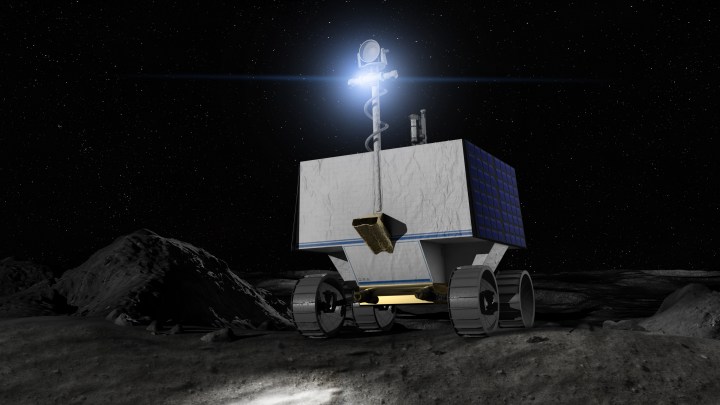
Before NASA sends humans back to the moon, it plans to send a robotic explorer: The Volatiles Investigating Polar Exploration Rover, or VIPER, rover.
NASA announced its plans for the rover in 2019, but the agency has now revealed more details about the rover’s design and mission. The aim of the rover is to scour the moon for resources that would be useful to future human explorers — primarily water. It will investigate the moon’s South Pole, where there is thought to be the greatest concentration of water ice on the moon’s surface.
The South Pole has some regions which are permanently shadowed from the sun which means they are extremely cold. The rover will have to be able to navigate through both darkness and light and to deal with extreme cold spots. To help see in the darkness, VIPER will be armed with headlights, the first to be included on a lunar rover, as well as special wheels and suspension to deal with the tricky lunar surface.
VIPER will have four instruments with which to make observations, including a hammer drill and three spectrometers. Over its mission of 100 Earth days, the rover will map out resources that could eventually be used by human visitors.
“The data received from VIPER has the potential to aid our scientists in determining precise locations and concentrations of ice on the Moon and will help us evaluate the environment and potential resources at the lunar south pole in preparation for Artemis astronauts,” said Lori Glaze, director for NASA’s Planetary Science Division. “This is yet another example of how robotic science missions and human exploration go hand in hand, and why both are necessary as we prepare to establish a sustainable presence on the Moon.”
NASA will now begin the development phase of the mission, with the aim to send VIPER to the moon in late 2023.
“VIPER will be the most capable robot NASA has ever sent to the lunar surface and allow us to explore parts of the Moon we’ve never seen,” said Sarah Noble, program scientist for VIPER at NASA Headquarters.
“The rover will teach us about the origin and distribution of water on the Moon and prepare us to harvest resources 240,000 miles from Earth that could be used to safely send astronauts even farther into space, including Mars.”



